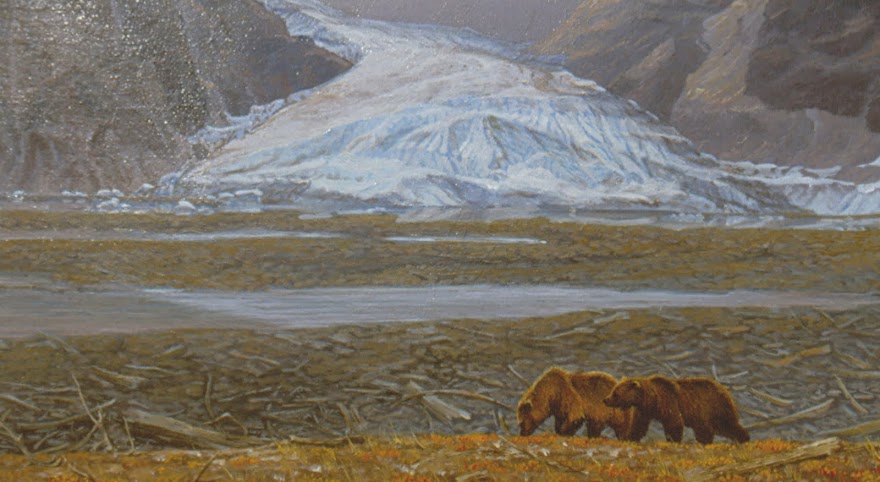A Leshii is a magical being from Slavic mythology. It is a shapeshifter and a protector of the ancient forest.
It uses a bear or a wolf to be it's companion and guardian. During medieval times, people entered the forest with fear and trepidation. A Leshii was not something to be trifled with. It was blamed for the disappearance of many a hapless traveler.
The dark trees in my latest painting remind me of the straight columns in an ancient Greek temple. The wolf guards the gates of the Leshii's Temple.
The painting is 18x24". I used entirely cold blue colors, but in the end I added some warm tones as an accent. Devil's Club and Fireweed are appropriate plants for the theme of this mystical painting.
It uses a bear or a wolf to be it's companion and guardian. During medieval times, people entered the forest with fear and trepidation. A Leshii was not something to be trifled with. It was blamed for the disappearance of many a hapless traveler.
The dark trees in my latest painting remind me of the straight columns in an ancient Greek temple. The wolf guards the gates of the Leshii's Temple.
The painting is 18x24". I used entirely cold blue colors, but in the end I added some warm tones as an accent. Devil's Club and Fireweed are appropriate plants for the theme of this mystical painting.



